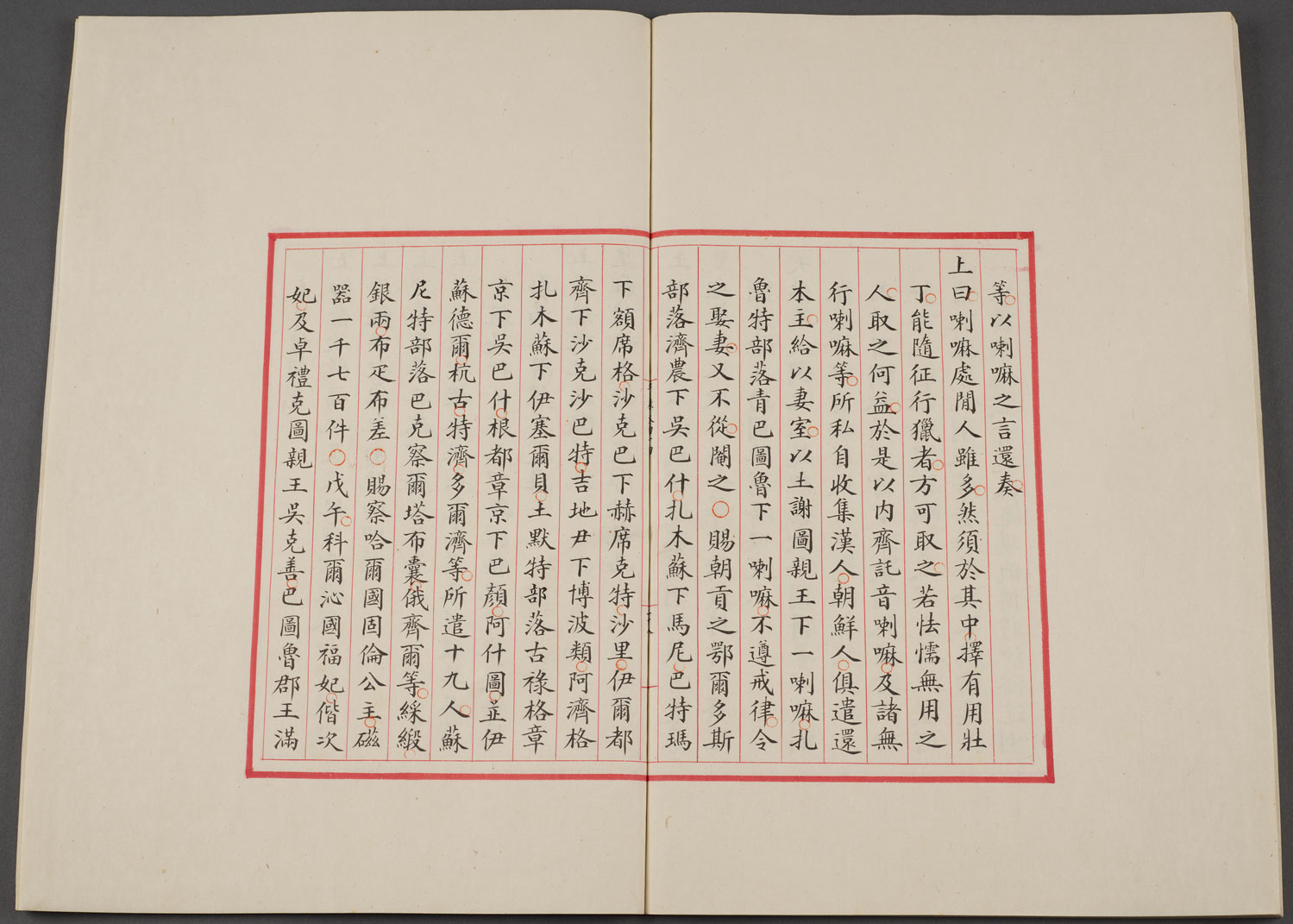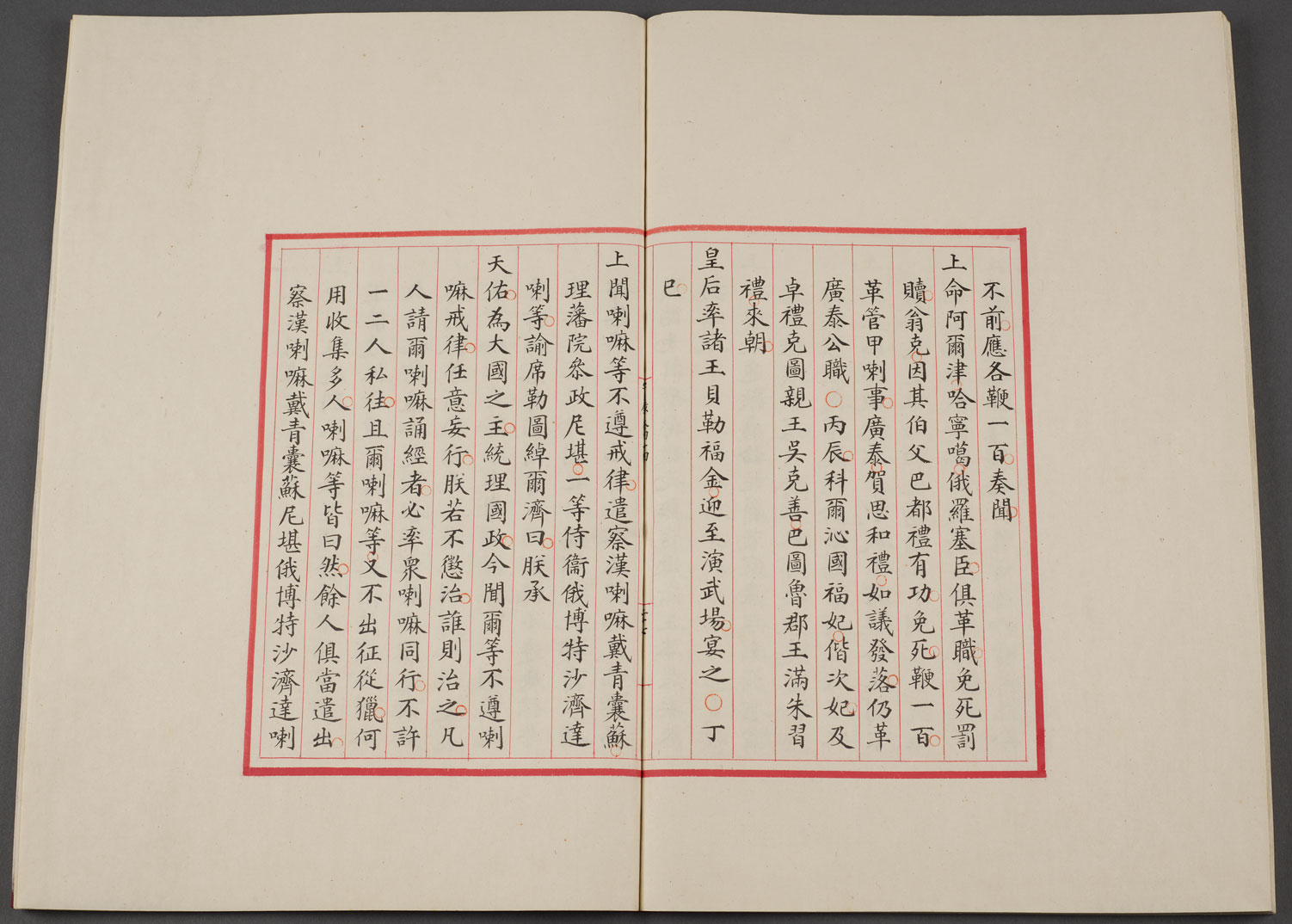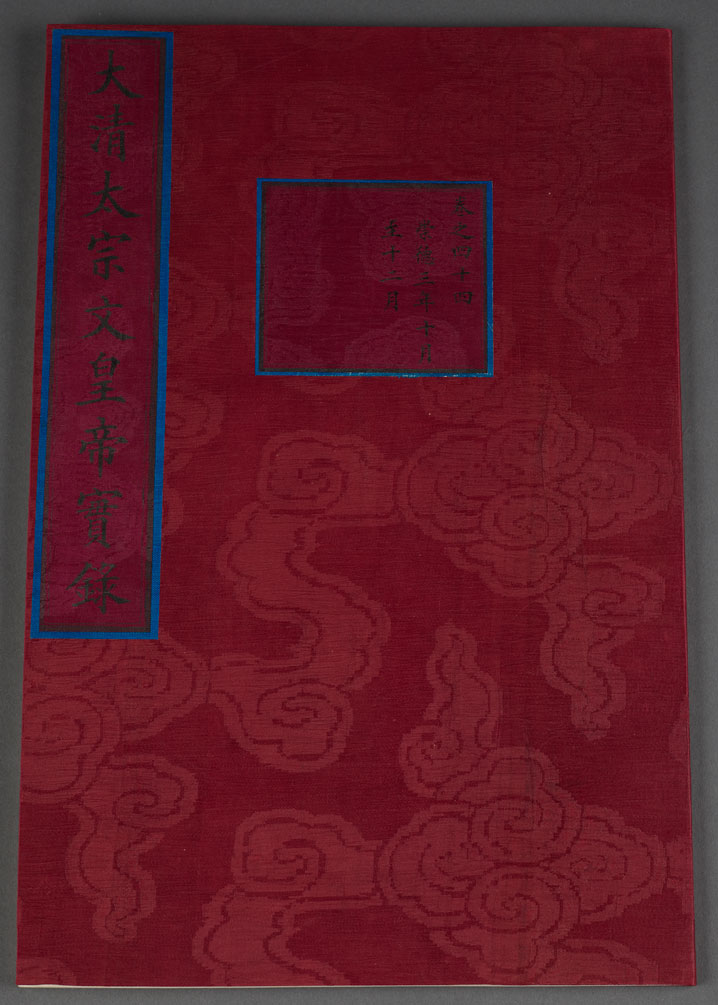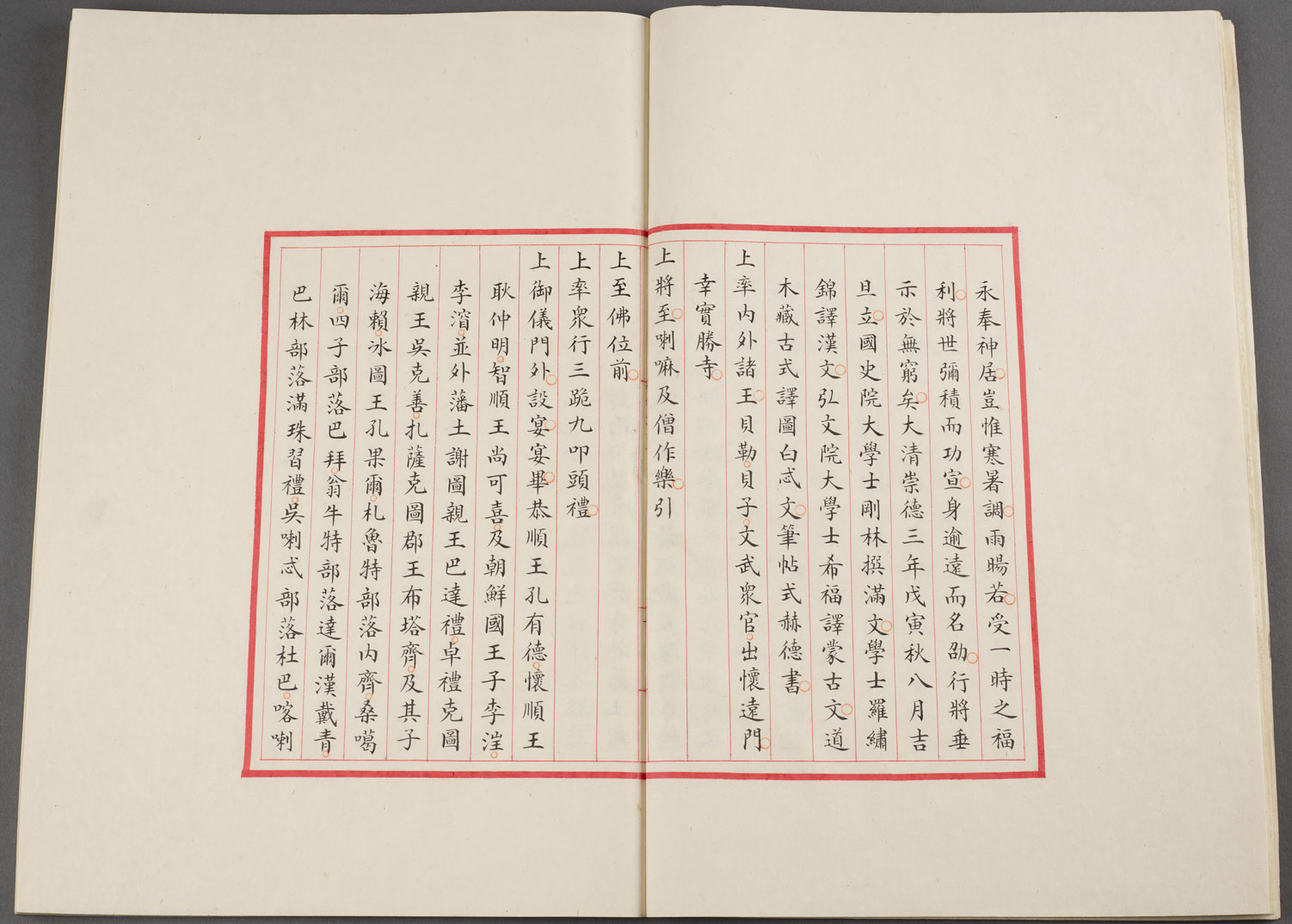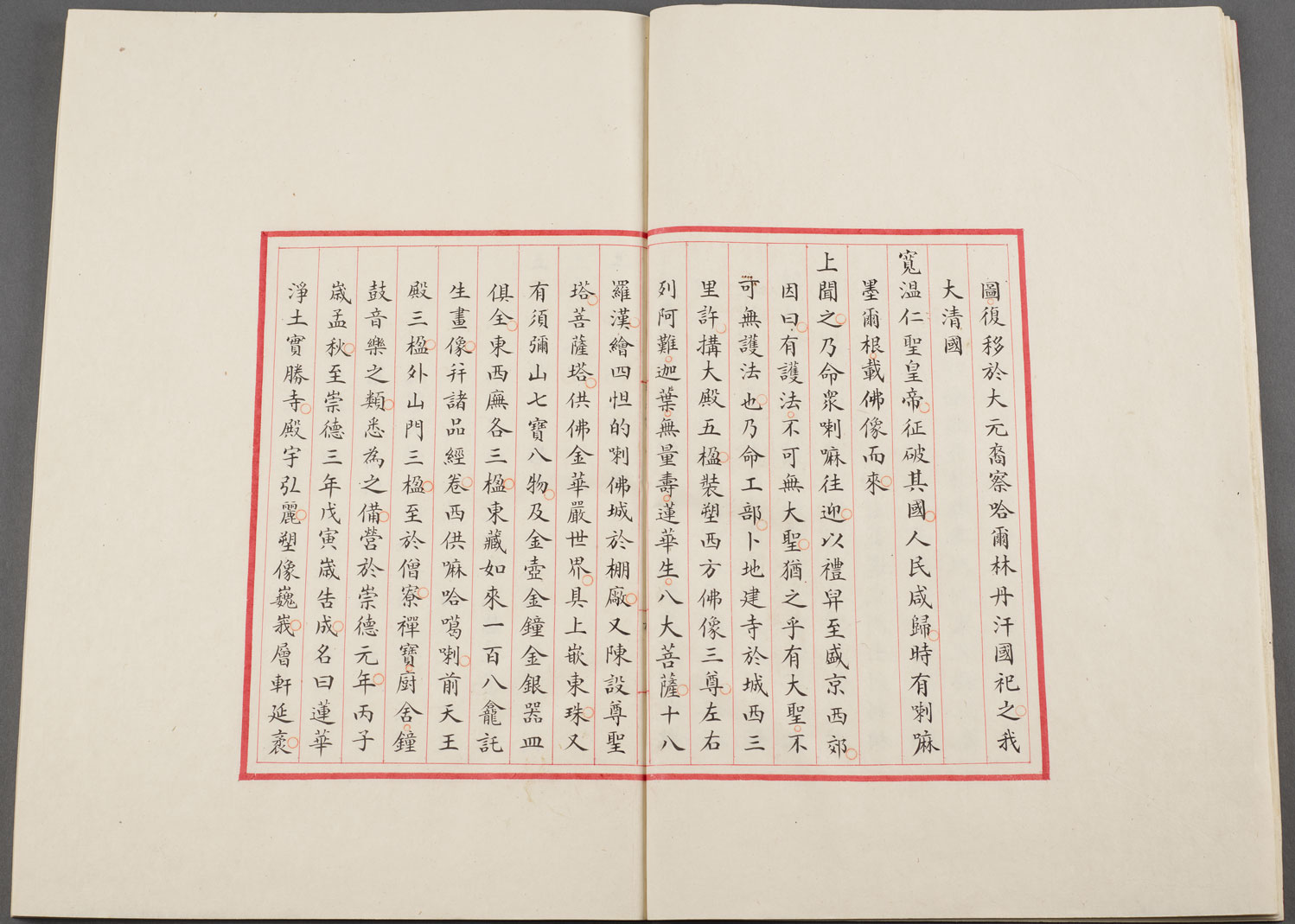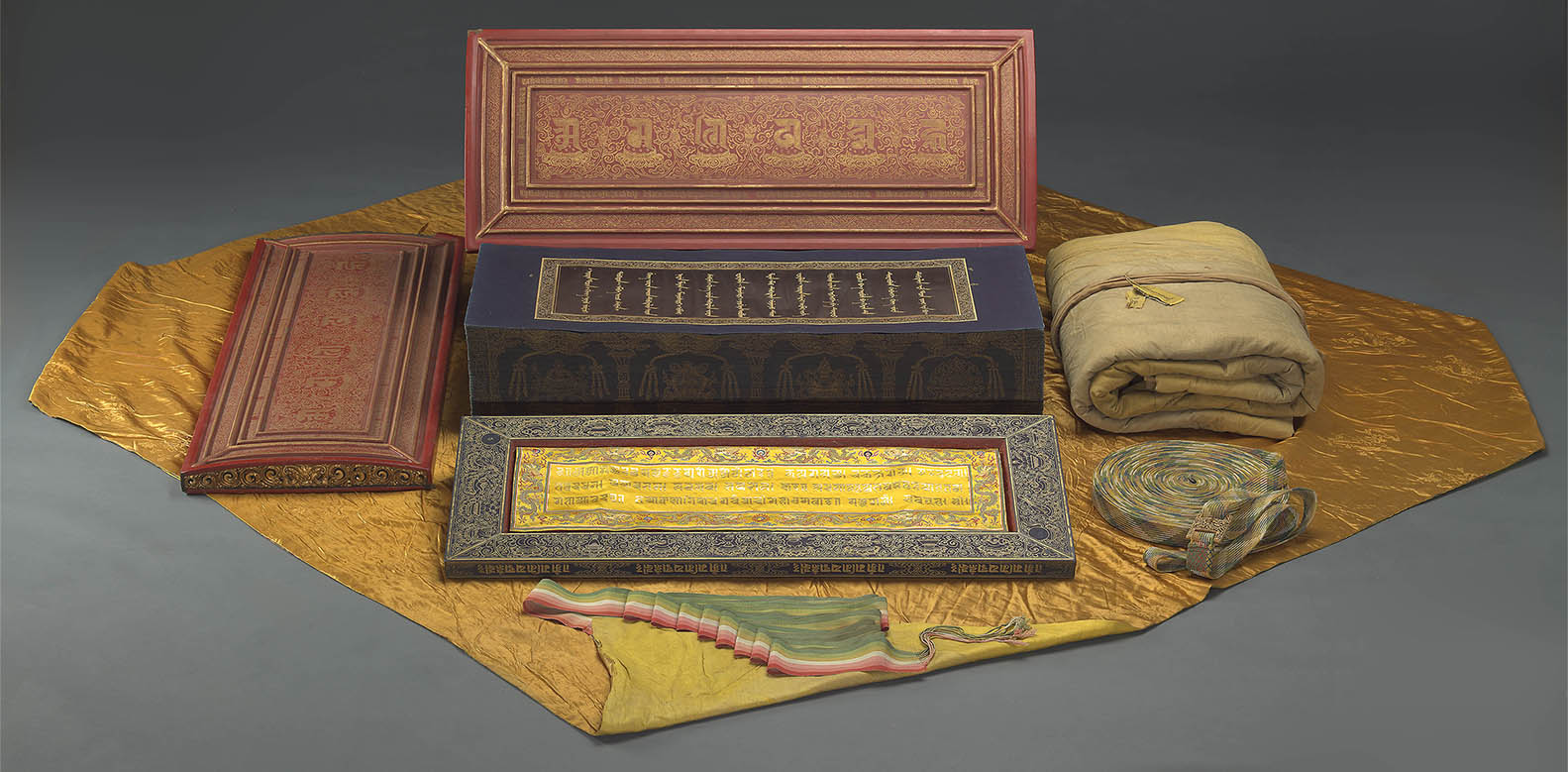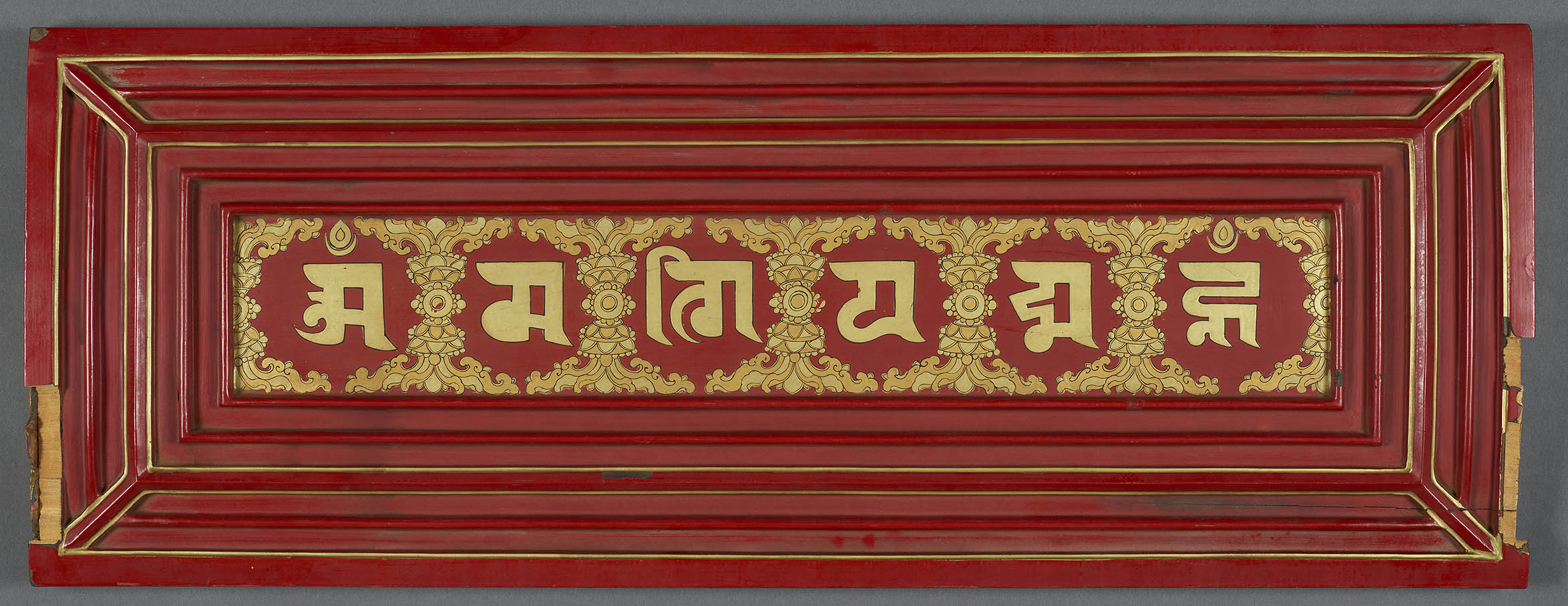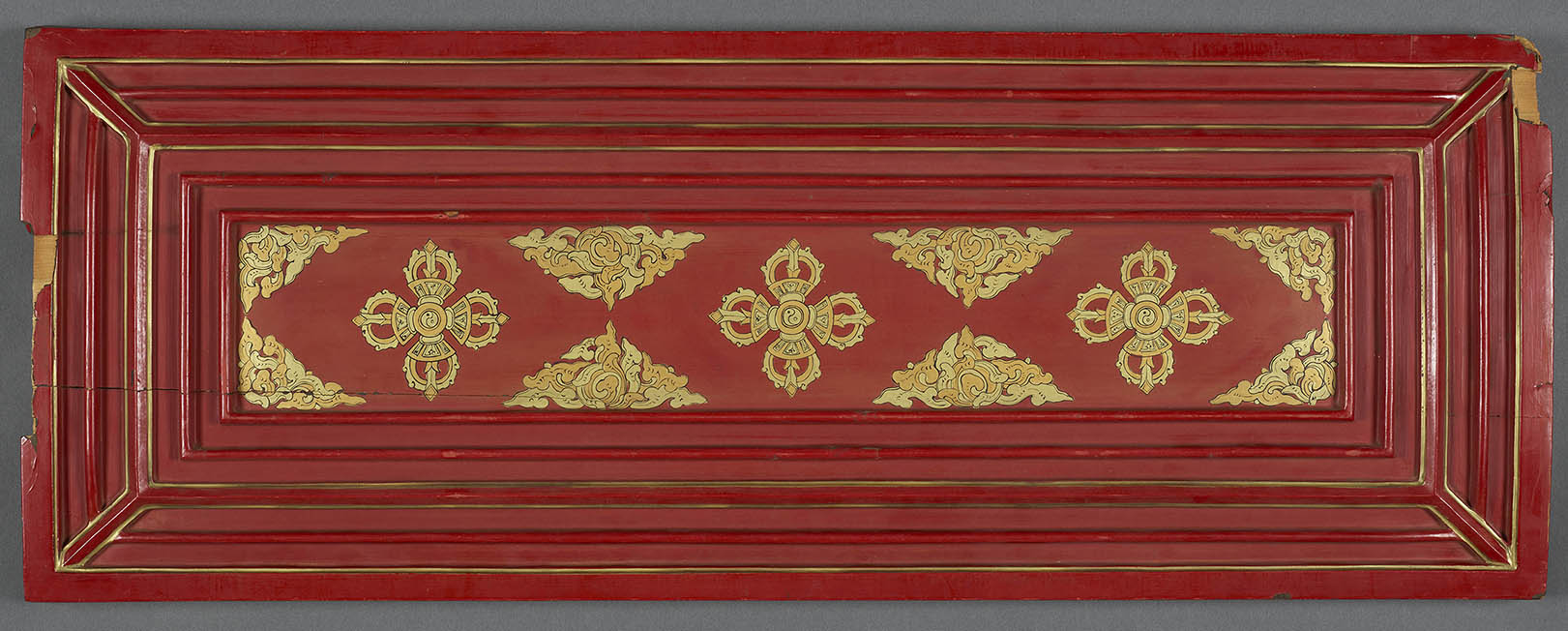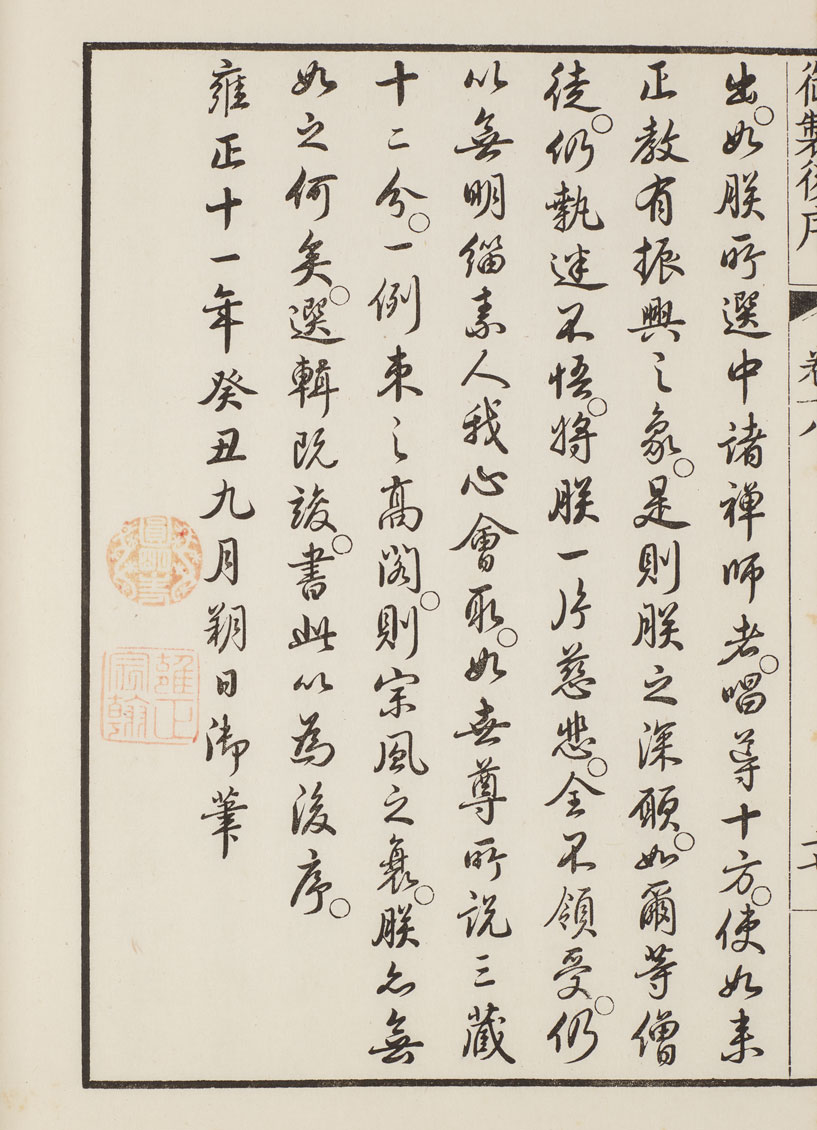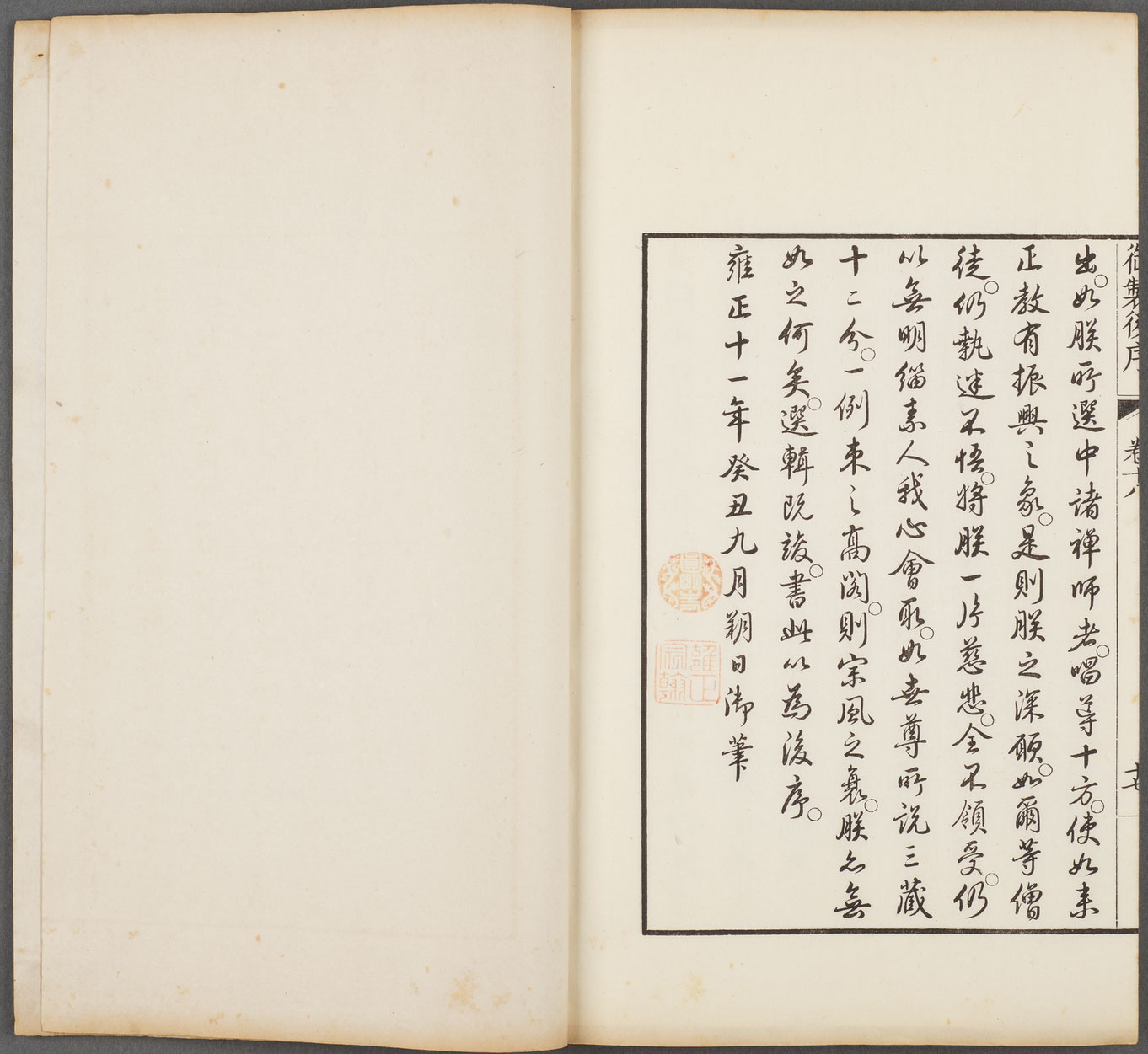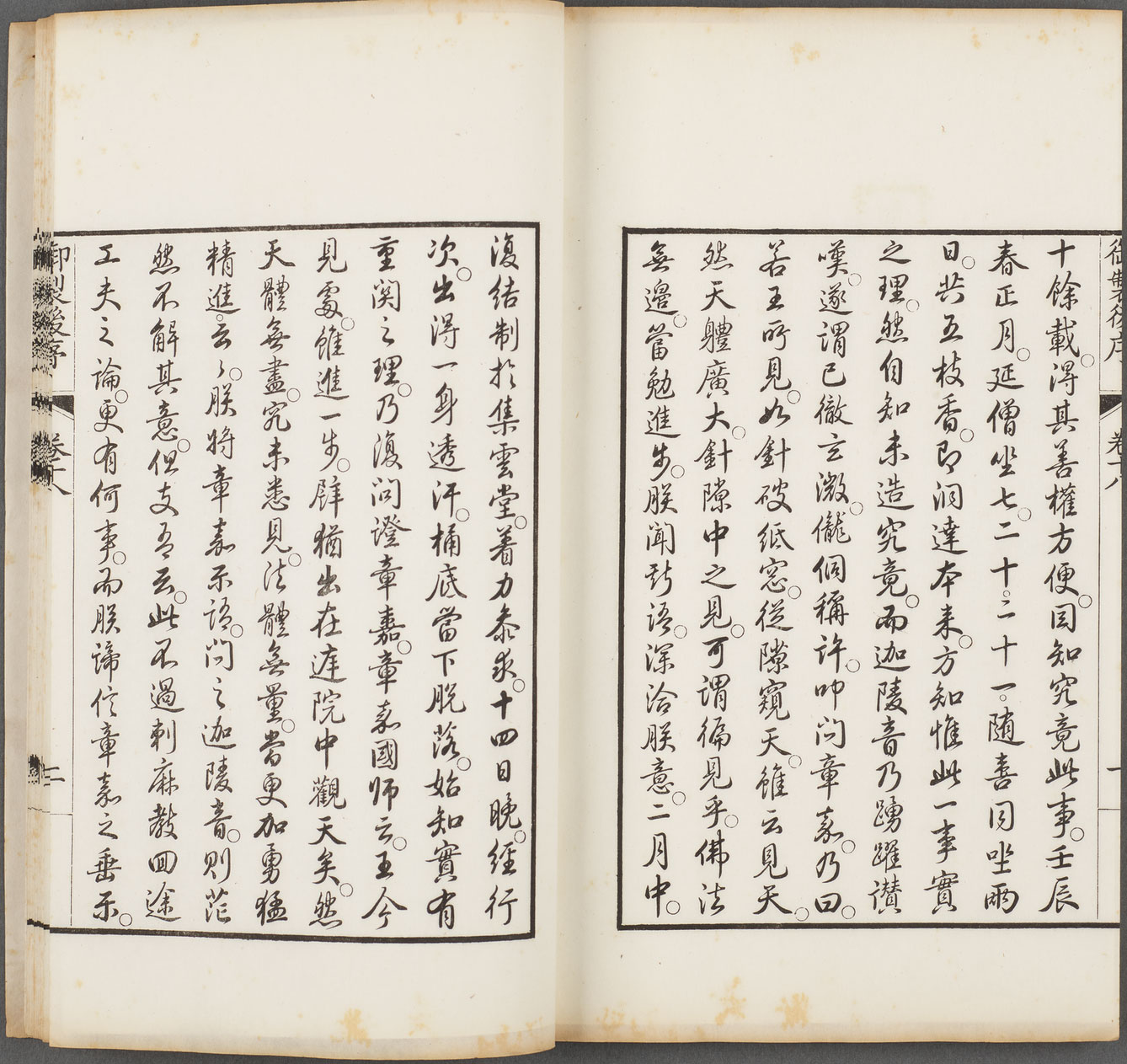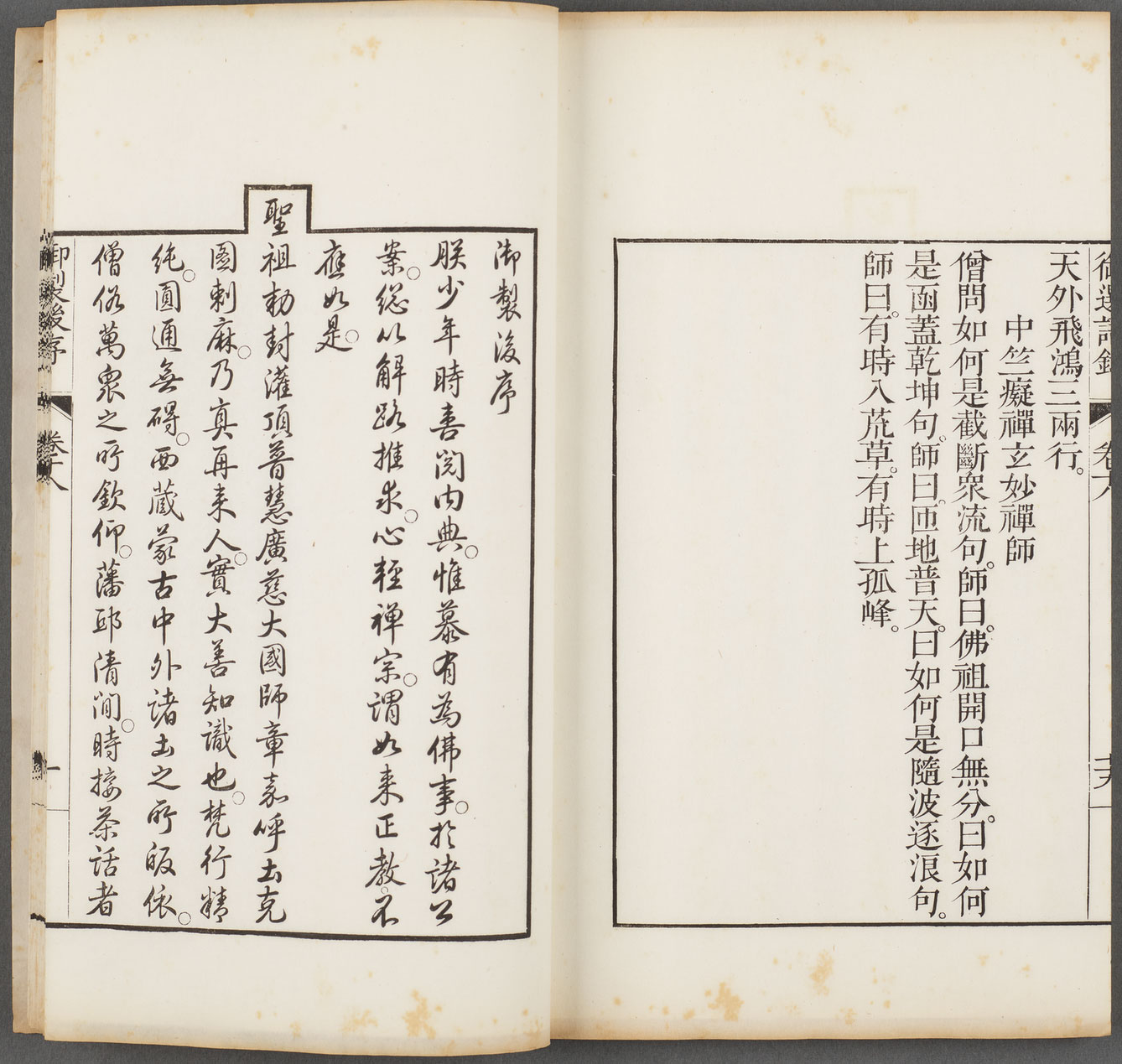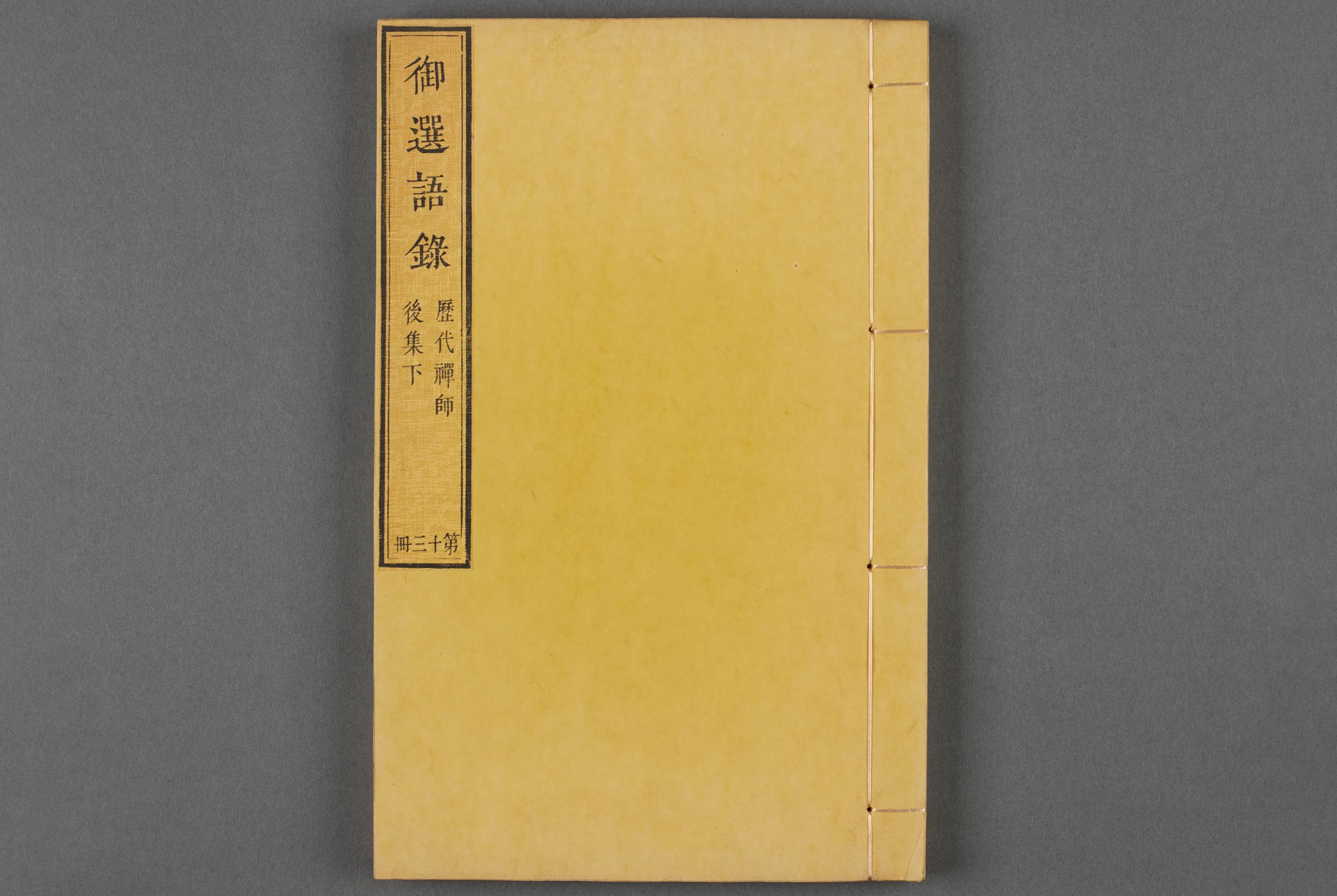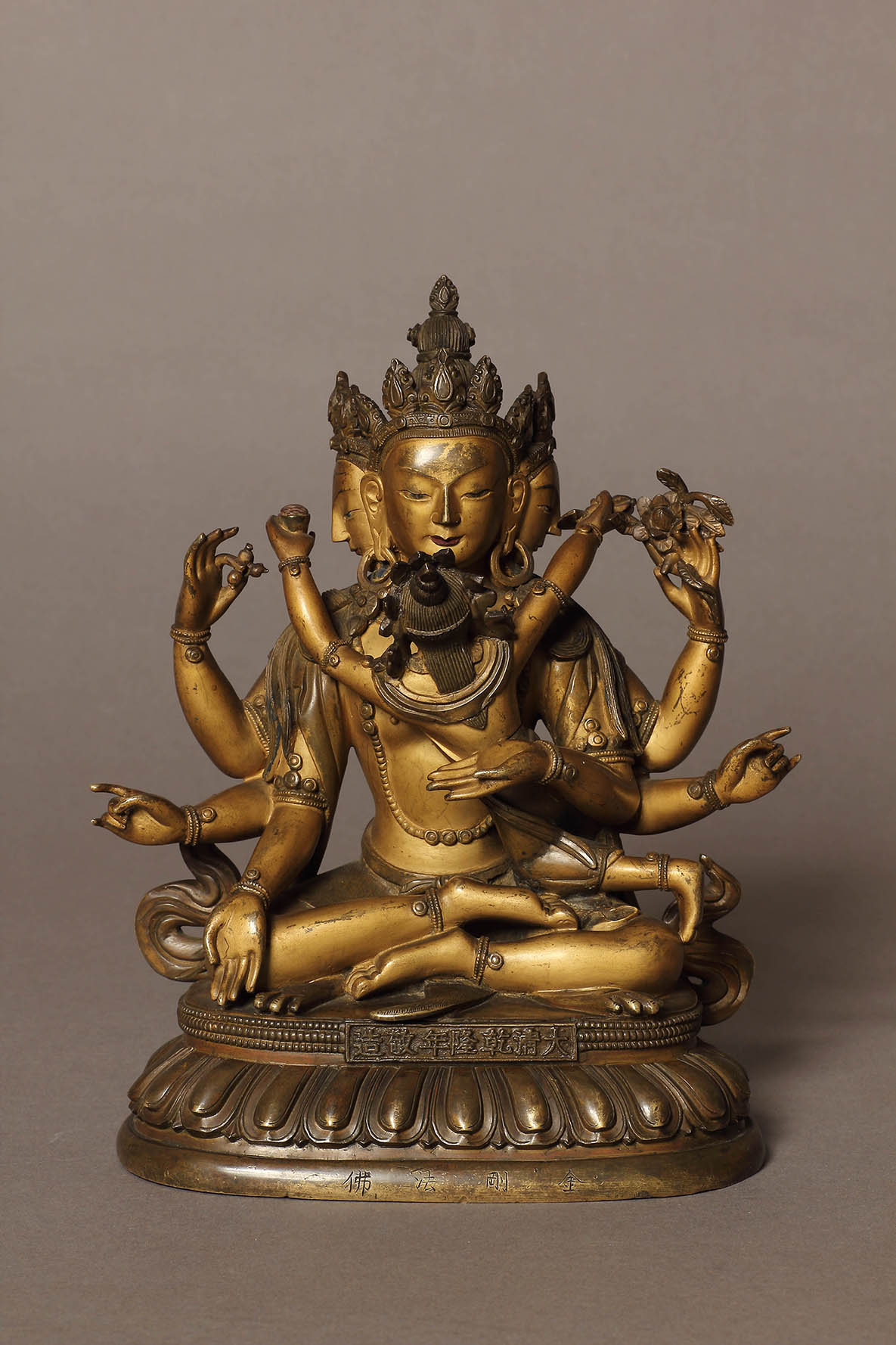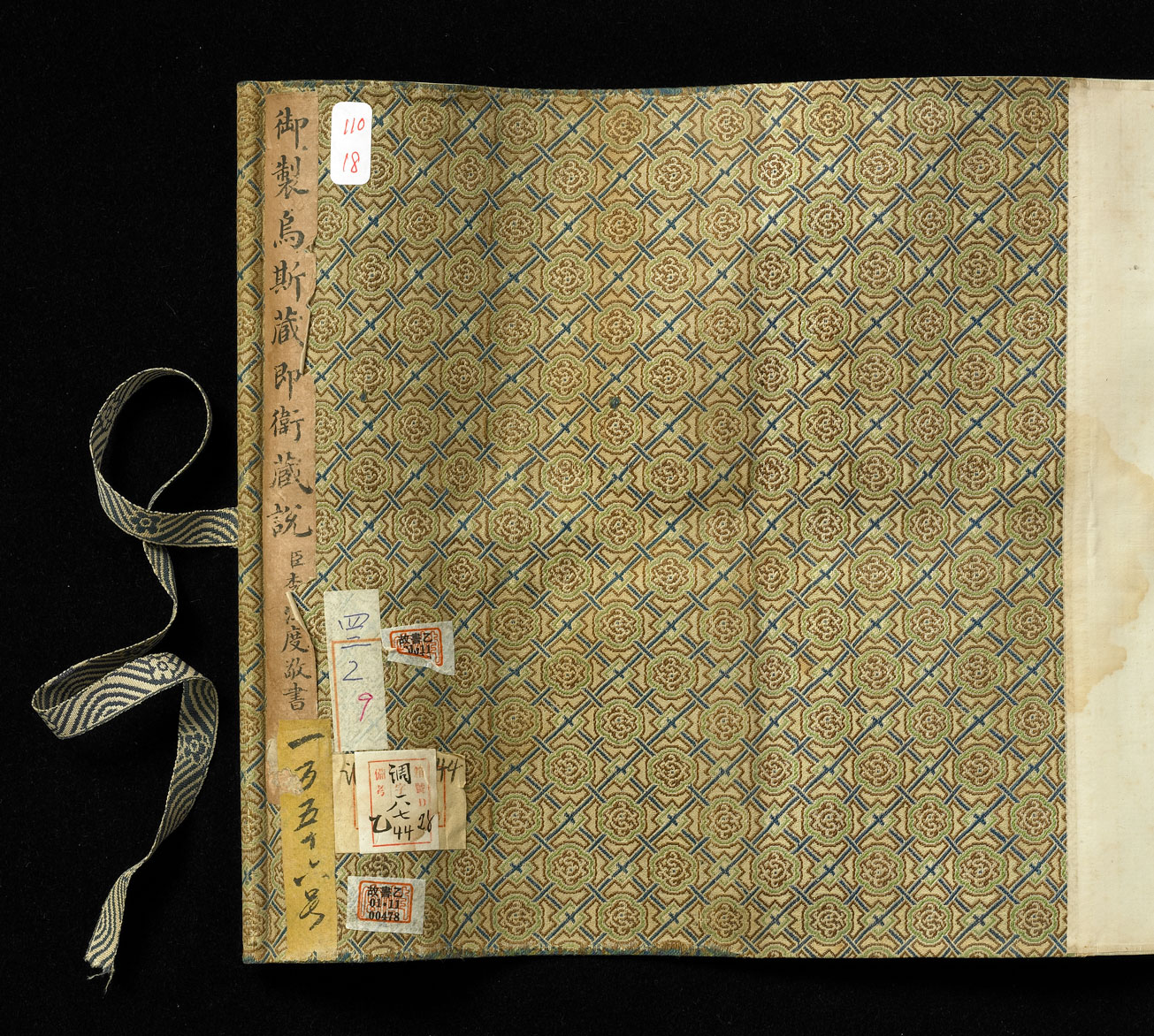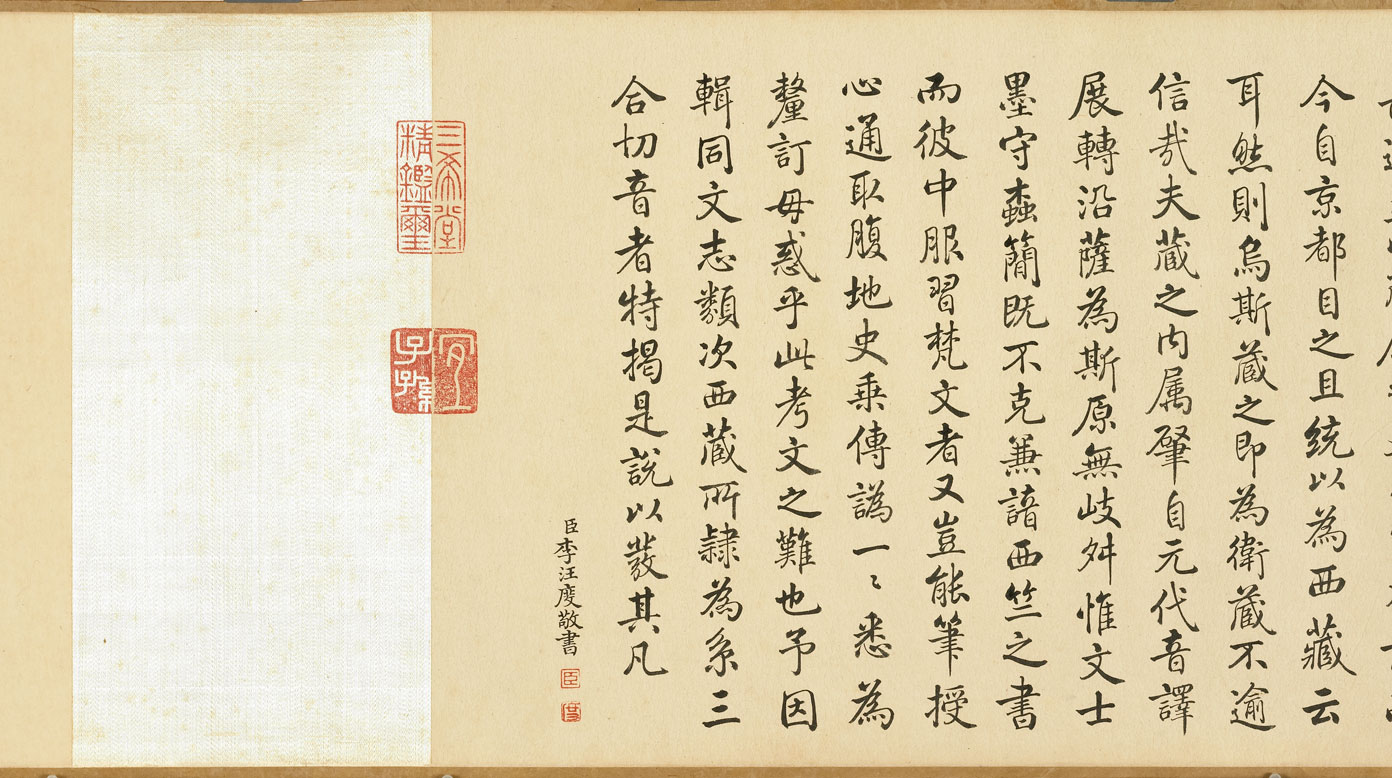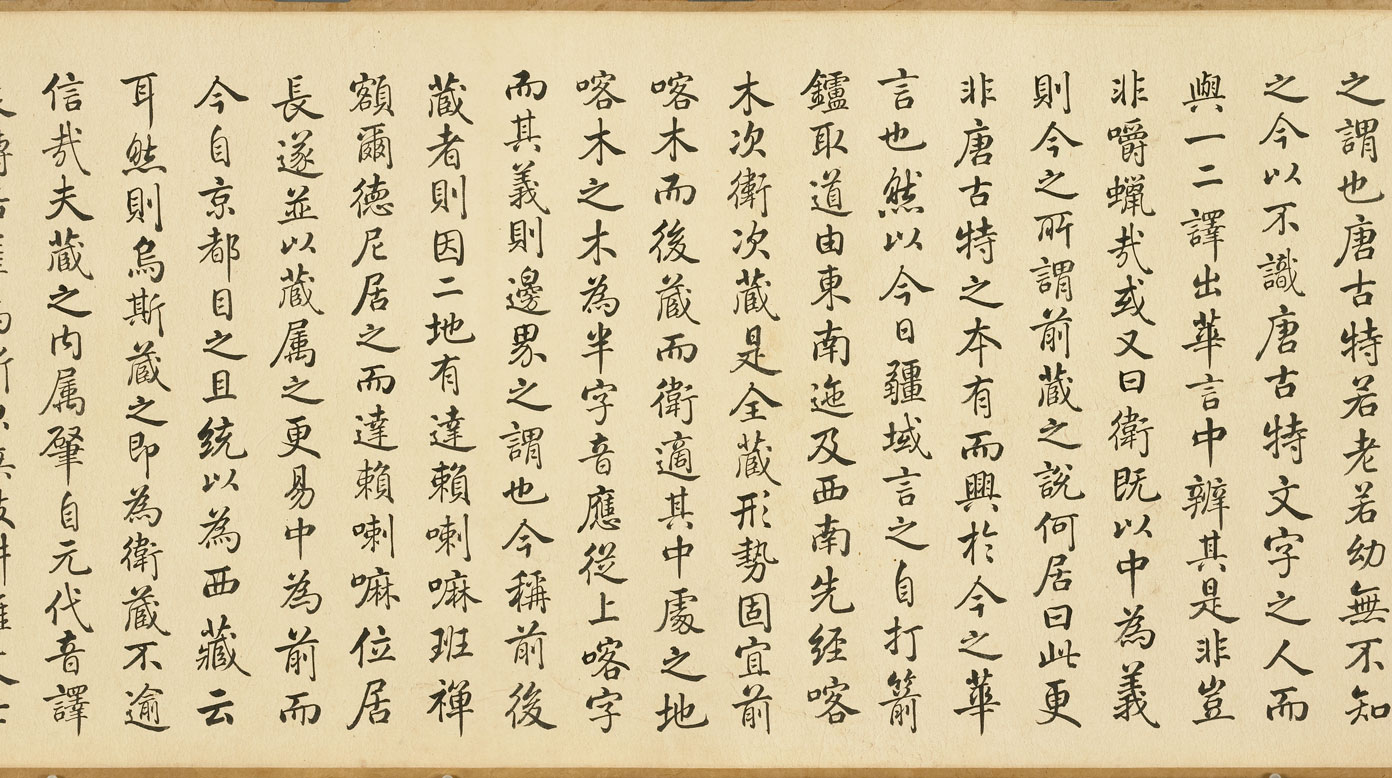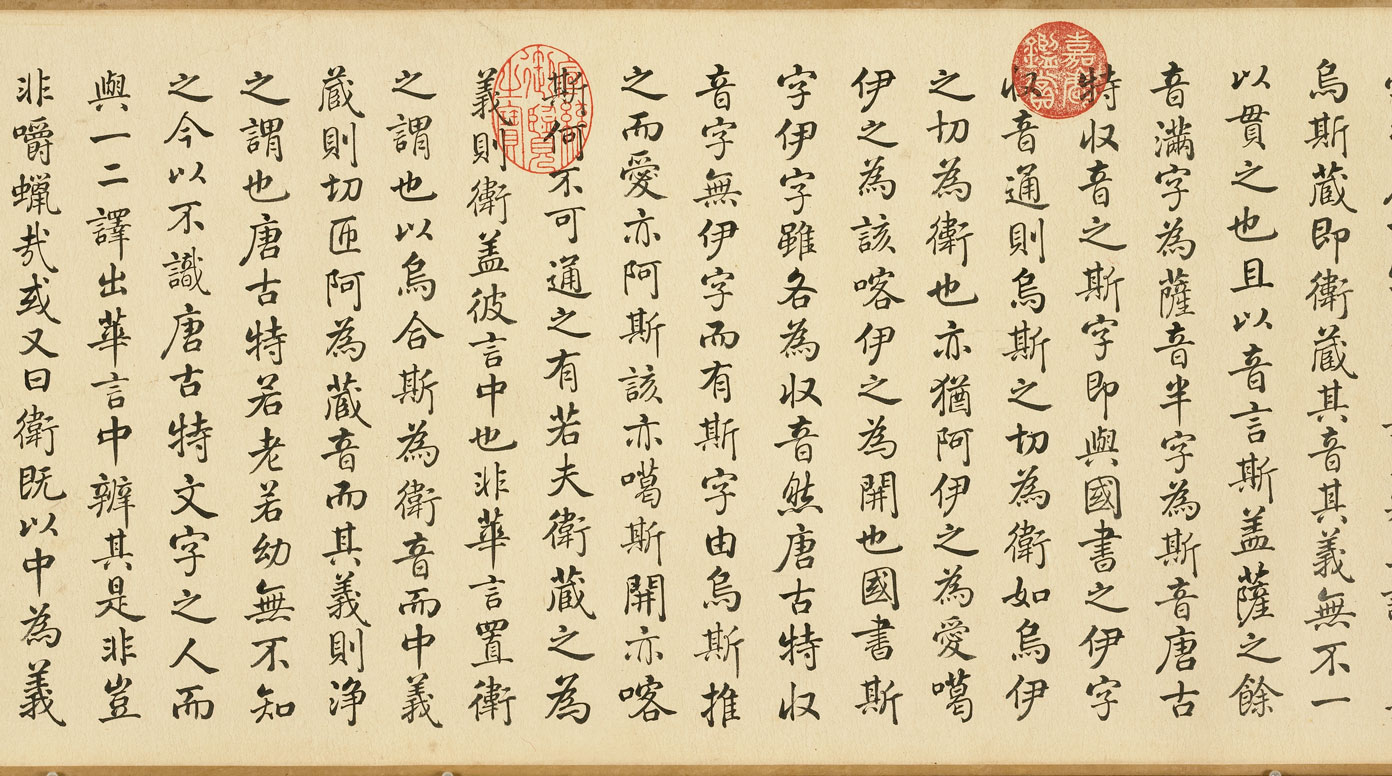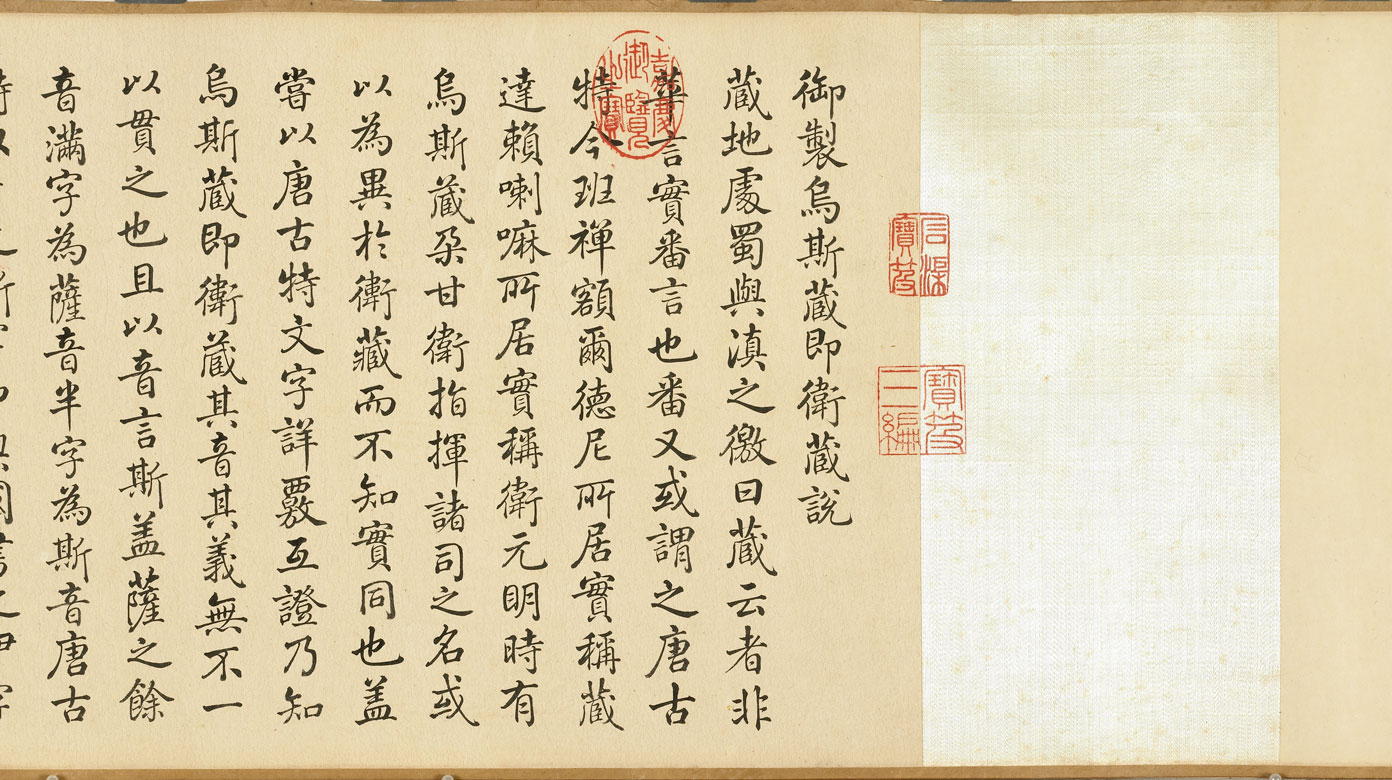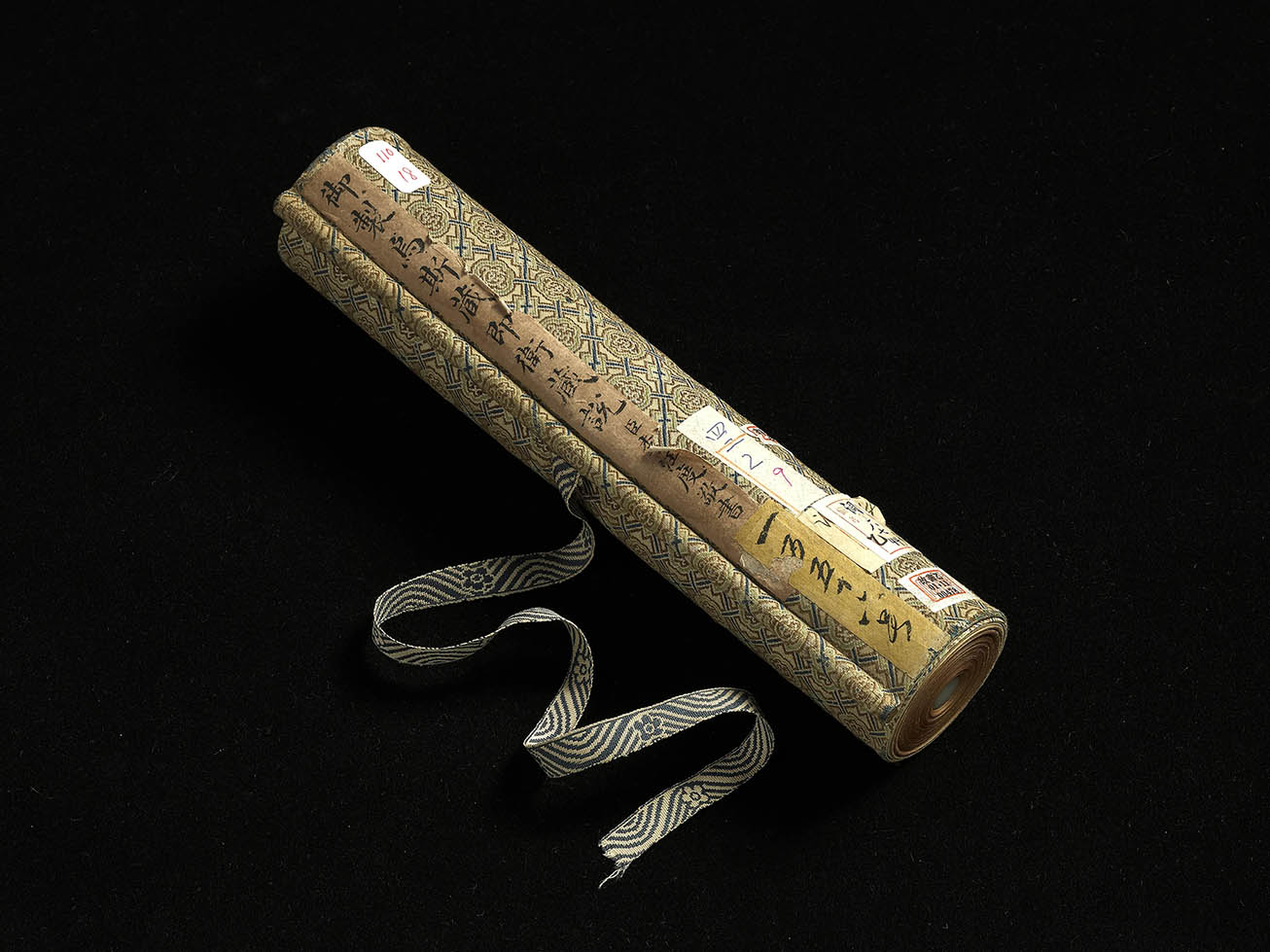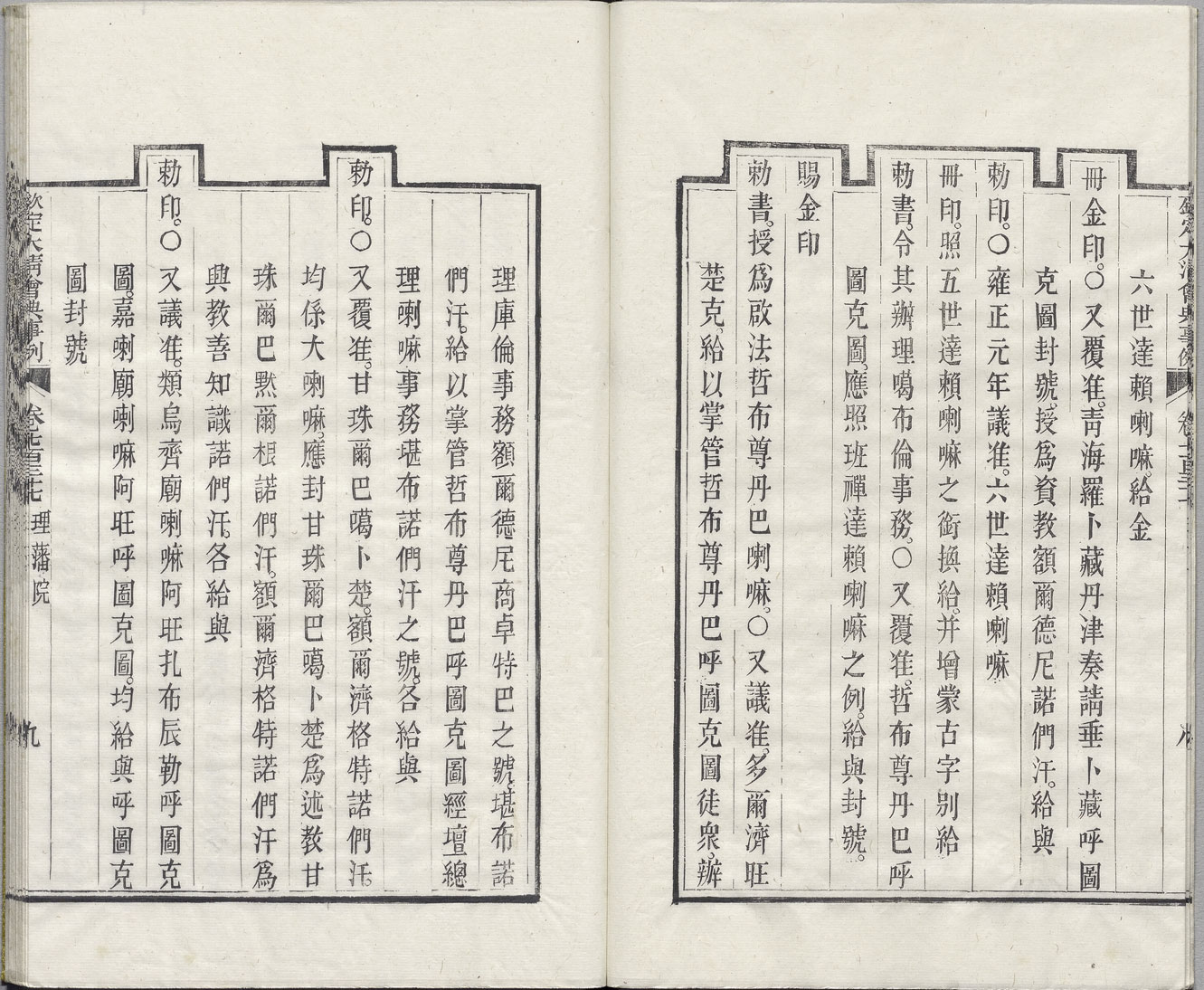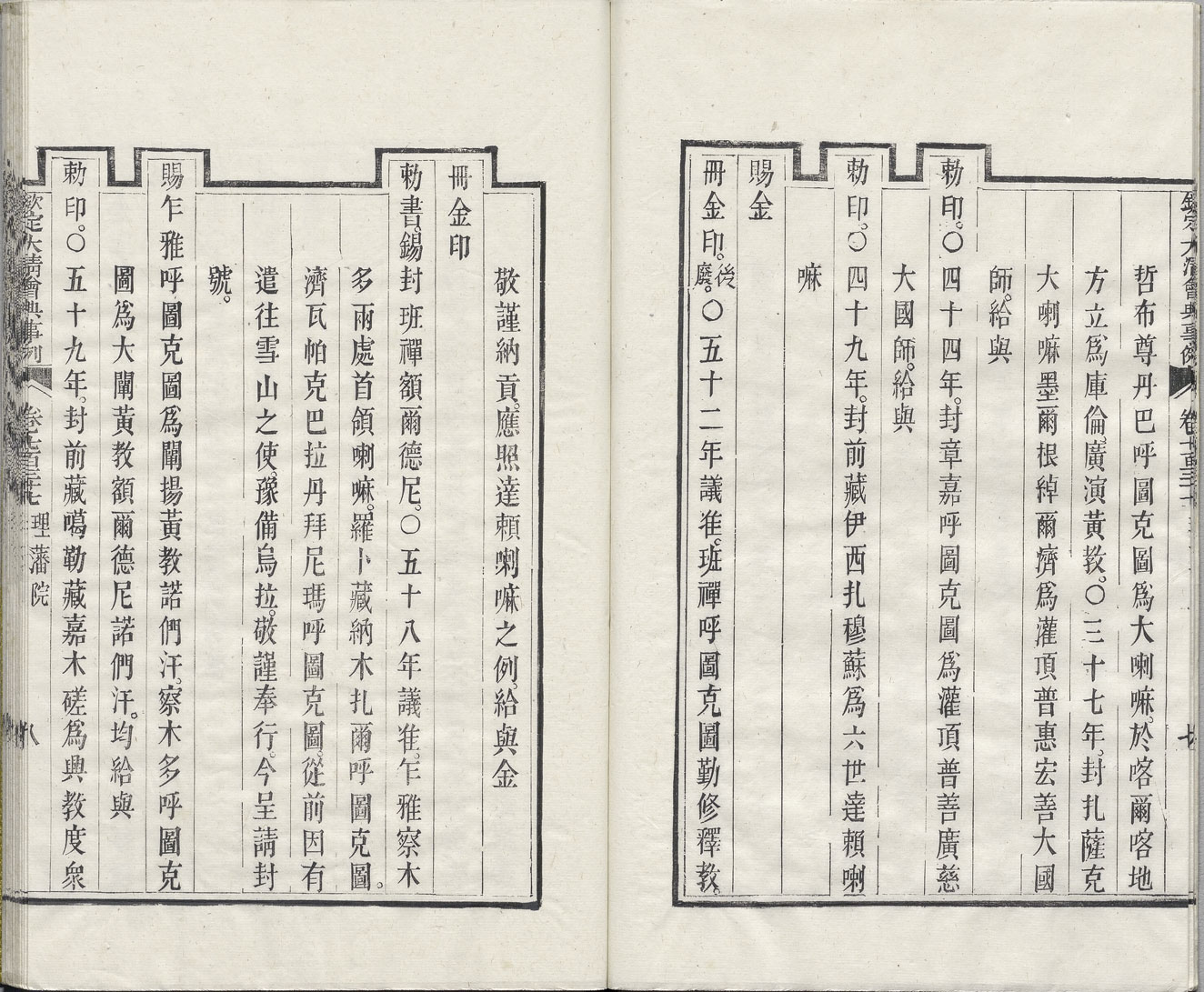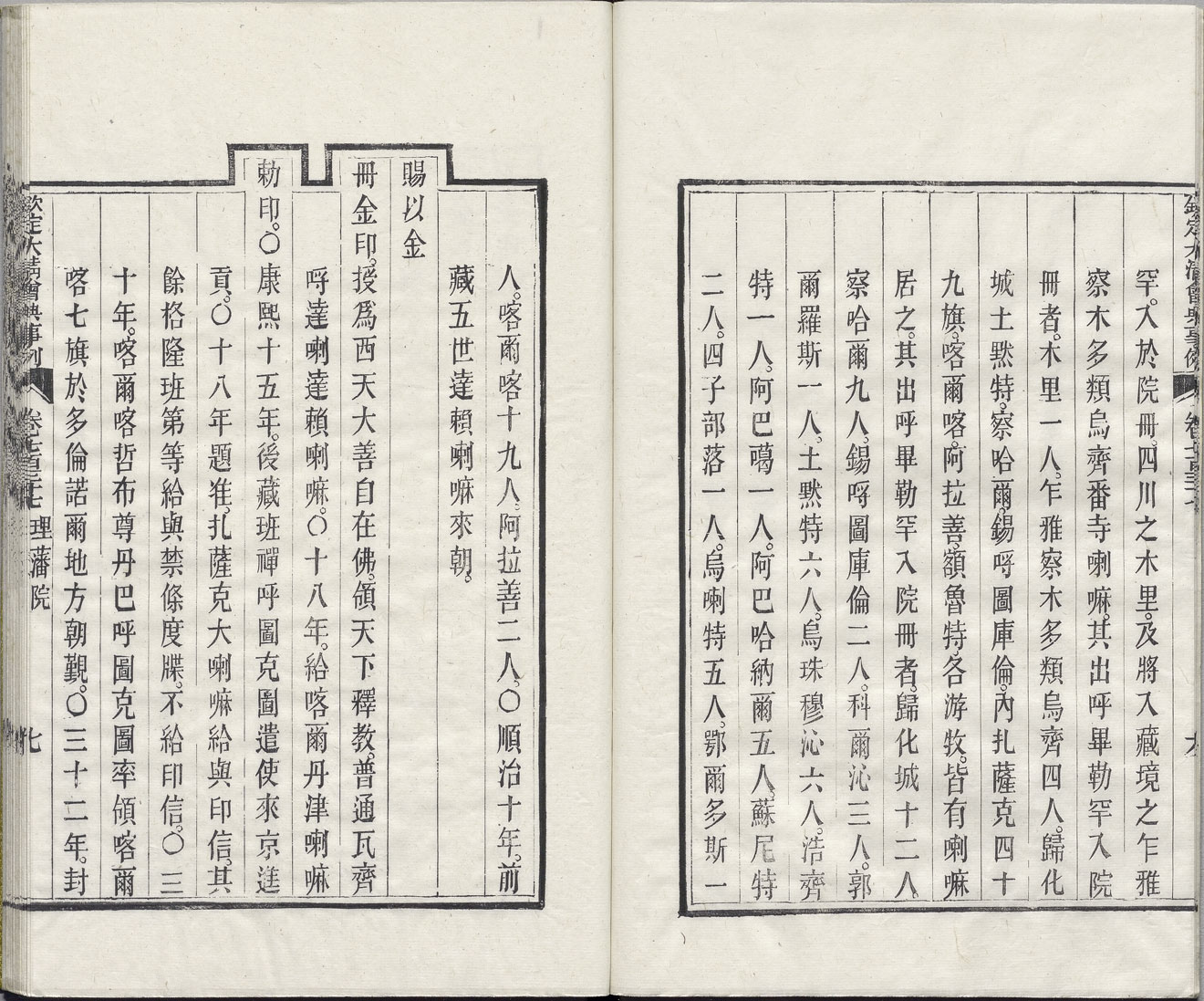The Qing Court and Khubilghans
The term huofo (living Buddha) first appeared in Chinese Buddhist texts of the Yuan dynasty, but it was not until the mid-Ming dynasty that it came to mean a reincarnated Tibetan Buddhist high monk. However, the term remained in popular usage and was not official nomenclature. When endorsements of living Buddhas were referred to in Qing official documents, the term adopted was the transliterated Mongolian khubilghan, which was interpreted by the Qianlong emperor as "a reincarnated spirit." This section of the exhibition starts with the origin of the Chinese term huofo and describes what early Qing emperors (the Shunzhi, Kangxi, Yongzheng and Qianlong emperors) saw in khubilghans, and how they interacted with them. It also presents a variety of artifacts to provide an overview of the development of the Gelug School and its distinctive characteristics.
Tibetan Buddhism in the Eye of the Qing Emperors
Ever since Huang Taiji had the Shisheng Monastery constructed in Mukden (Shenyang), successive Qing emperors had a strong affinity for Tibetan Buddhism, frequently interacting with high monks of the Gelug School, and the imperial prefaces to sūtras and Buddhist artifacts at court also attest to their devout faith.
Completion of the Construction of the Shisheng Monastery Commissioned by the Qing Emperor Taizong
- From fascicles 43-44 of Daqing Taizong Wenhuangdi Shilu (Veritable Records of Emperor Wen, Taizong, of the Great Qing)
- Entry for the jenying day of the 8th month, 3rd year of the Chongde reign (September 19, 1638), Qing dynasty
- Large red silk-bound edition
Constructed by Huang Taiji in the 3rd year of the Chongde reign (1638), the Shisheng Monastery in Mukden (Shenyang) is the first Tibetan Buddhist monastery built by the Manchus before their conquest of China.
Huang Taiji visited the monastery to pay his respects in the first month of every year during his reign. The gold statue of Mahakala worshipped therein was originally enshrined in Mount Wutai by Yuan dynasty Imperial Preceptor Drogon Chogyal Phagpa (1235-1280). The statue came into the possession of the Manchus when Huang Taiji defeated Ligdan Khan (1592-1634) of the Chakhar Mongols. When traveling east to Mukden, most Qing emperors would pay a visit to the Shisheng Monastery.
Longzangjing (Tibetan Dragon Canon, or, Kangxi Kangyur)
- Court manuscript hand-written in gold-inked Tibetan script, 8th year of the Kangxi reign (1669), Qing dynasty
Once the transcription of the Tibetan Dragon Canon was completed, at the request of his grandmother Grand Empress Dowager Xiaozhuang (1613-1688), the Kangxi emperor (r. 1661-1722) composed a preface. Written in gold ink in both Manchu and Tibetan scripts, the preface is placed at the head of the first volume "Ka."
Titled "ambabaktaniboobai gung nisioi" in Manchu and "chos kyi gter mdzod chen po bka' ‘gyur gyi bris sbyang" in Tibetan, the preface describes how the devout Grand Empress Dowager saw that the Kangyur produced in the previous dynasty had become dilapidated, and thus commissioned a new transcription in the hope of spreading the teachings of compassion and altruism.
Zhupin Jizhoujing (Collection of Various Mantras and Sūtras)
- Court manuscript hand-written in red-inked Tibetan script, 13th year of the Kangxi reign (1674), Qing dynasty
The binding of this Zhupin Jizhoujing, a court manuscript written in black ink on white paper in the 7th month the 13th year of the Kangxi reign (1674), adheres to the tradition for Buddhist classics. Several parts of the Tibetan colophon indicate the transfer of merit, praying for the emperor to have a long reign, plenty of offspring, and a life of bliss. The Kangxi Emperor (r. 1661-1722) turned 20 in that year, so this collection was likely produced by the Imperial Household to mark the emperor's birthday.
The Zhupin Jizhoujing, which comprises a total of 167 dhāraṇī chants and short Buddhist classics, is categorized as Zungdu (gzungs bsdus), a collection of mantras, in Tibetan Buddhism. Throughout Tibetan history, many sect leaders have compiled such Zungdu works. For example, the collection included in the Longzangjing (Tibetan Dragon Canon, or, Kangxi Kangyur) was compiled by Bu ston rin chen grub (1290-1364), who also compiled the Tsalpa edition of the Kangyur. According to the Tibetan-script colophon in the Zhupin Jizhoujing, this collection was transcribed from the version compiled by the Jonang school master Tārānātha (1575-1634) in his later years. What makes the Zhupin Jizhoujing stand out is its inclusion of the table of contents of Tārānātha's dkar chag dgos ‘dod kun ‘byung, and its listing Mañjuśrīnāmasaṃgīti as its first volume. The Mañjuśrīnāmasaṃgīti, the last Tibetan translation produced by Zha lu lo tsA chos skyong bzang po (1441-1527), also differs from most other Tibetan versions of the sūtra.
The manuscript is wrapped in three layers of fabric and sandwiched between two outer and inner planks. The edges of the paper leaves are painted with the Eight Auspicious Symbols. One inner cover plank is decorated with a multicolored Śākyamuni and Vajradhāra; in between the buddhas are reverential sentences "Homage to Buddha, homage to Dharma, and homage to Saṃgha" written in Sanskrit and Tibetan scripts. The other inner cover plank is adorned with images of Śakra and Caturmahārājakayikas. To the lower left of Śākyamuni is a worshipper in secular clothing holding a maṇḍala plate and a khata. Judging from the attire and the headdress, the figure is a Qing emperor, i.e. Kangxi. Of all the illustrations on Tibetan-script sūtra cover planks in the Museum's collection, this is the only one depicting a Qing emperor worshipping the Buddha, making it a highly precious specimen. The Tibetan monk in a Gelug School hat standing below and to the right of the Vajradhara is opposite to the emperor. The two images add to each other's splendor.
The paper leaves are written in Tibetan script in black ink, with the first four pages containing four, five, six, and seven columns, respectively, and the rest containing eight columns. This format is identical to that of the Longzangjing, completed in the 8th year of the Kangxi reign (1669).
Prolegomenon
- From fascicle 18 of Yuxuan Yulu (Imperially Selected Quotations)
- Compiled by Emperor Yongzheng (1678-1735), Qing dynasty
- Printed edition by the Imperial Printing Office at Wuyingdian Hall, 11th year of the Yongzheng reign (1733), Qing dynasty
The 19-fascicle Yuxuan Yulu compiled by the Yongzheng emperor (r. 1722-1735) consists of the teachings of Zen Buddhist masters and the words of princes and ministers who practiced Zen Buddhism. The 19 fascicles are augmented by 19 prolegomena written by the emperor himself. In the prolegomenon in fascicle 18, the emperor describes in detail how the Second Changkya Khutukhtu (1642-1715) enlightened him, and praises the religious teacher profusely.
Statue of Vajradharma
- Produced by imperial workshop, mid-18th century
- Collection of the Garuda Tibetan Art Studio
The lotus throne of this statue is inscribed with the words "Made during the Qianlong reign of the Great Qing," with "Vajradharma" on the front and "yoga root" on the back. This is typical of the style of Liupin Folou (Six Buddhist Class Temples). Vajradharma is the name of the deity, and "yoga root" indicates that he is a deity of the Yoga Tantra.
The statue of this three-faced, six-armed deity embracing his consort is very rare, and is possibly Vajradharma Lokeshvara, which belongs to the practice of Avalokiteśvara in the Yoga Tantra. Compared with the later more formulaic Liupin Folou statues, the texture and flowing sashes of this statue are more sophisticated, meaning it is likely from the early period of Liupin Folou production and is a rarity both in terms of iconography and artistic expression.
Between the 22nd and 47th year of the Qianlong reign (1757-1782), the emperor ordered the construction of eight Liupin Folou in the Forbidden City, the Old Summer Palace, and monasteries and temples in Chengde.
Liupin, or six classes, refers to the Gelug School Esoteric Buddhism's kriya-tantra, charya-tantra, yoga tantra, and the father and mother tantras of Anuttarayoga tantra, plus the Prajñāpāramitā of Exoteric Buddhism. The construction of the Liupin Folou shows the Qianlong emperor's fascination with the Gelug School system of deities.
Imperially Written Discourse on the Identity of Dbus gtsang and U gtsang
- Li Wongdu (c1743-1819), Qing dynasty
- Handscroll
The Qianlong emperor possessed a profound knowledge of the Tibetan language, and in his "Discourse on the Identity of Dbus gtsang and U gtsang," he explains that Dbus gtsang, the term used by the Yuan and Ming dynasties to refer to Tibet, is in fact the same as U gtsang, the prevailing term at that time.
He points out that U is a simplified pronunciation of Dbus (meaning "central") and that U gtsang is divided into Front and Rear Tibet because the Dalai Lama and the Panchen Lama resides in two places. Li Wangdu, who transcribed this work, was awarded the jinshi degree in the 22nd year of the Qianlong reign (1757) and served as chief proofreader of the Siku Quanshu (Complete Collection of the Four Treasuries).
Entry for "Lama Fenghao (Titles Bestowed upon Lamas)" in the chapter on Lifan Yuan (Board for the Administration of Outlying Regions)
- From fascicle 737 of Qinding Daqing Huidian Shili (Imperially Endorsed Collected Administrative Statutes and Precedents of the Great Qing)
- Compiled on imperial order by Tojin (1755-1835), et al., Qing dynasty
- Printed edition by the Imperial Printing Office at Wuyingdian Hall, 23rd year of the Jiaqing reign (1818), Qing dynasty
The investiture of the four important living Buddhas of the Gelug School in the early Qing dynasty is recorded in detail in the "Titles Bestowed upon Lamas" section of the Imperially Endorsed Collected Administrative Statutes and Precedents of the Great Qing.
The Fifth Dalai Lama was invested in the 10th year of the Shunzhi reign (1653), the First Jebtsundamba Khutuktu was given the title of Great Lama and Leader of the Yellow Sect in Outer Mongolia in the 32nd year of the Kangxi reign (1693), the Second Changkya Khutukhtu was named Great State Preceptor in the 44th year of the Kangxi reign (1705), and the Fifth Panchen Khutuktu was given the title of Panchen Erdeni in the 52nd year of the Kangxi reign (1713)
